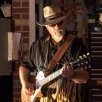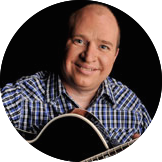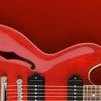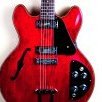-
Posts
224 -
Joined
-
Last visited
-
Days Won
16
Content Type
Profiles
Forums
Gallery
Events
Articles
Blogs
Downloads
Community Map
Everything posted by Six String
-
Call me whatever you like, but if you pay $98,000 for an amp, you are the Dumbbell.
-

Another Heritage Guitar Auction
Six String replied to matonanjin's topic in Guitar Gear, Amps, Effects, Pedals
Seems to be the missing link between "Guitar" and "Air Guitar". -

Another Heritage Guitar Auction
Six String replied to matonanjin's topic in Guitar Gear, Amps, Effects, Pedals
Really? https://entertainment.ha.com/itm/musical-instruments/electric-guitars/circa-1995-tueffel-birdfish-blue-electric-guitar-serial-98/a/7206-85135.s?ic16=ViewItem-BrowseTabs-Auction-Open-ThisAuction-120115 -
Wowza! That's exactly the model I would have chosen for myself. Love that Blonde look! Congrats!
-

NAD - Fender Bassbreaker 30R
Six String replied to Old Guy's topic in Guitar Gear, Amps, Effects, Pedals
Cool. I am pretty emotionally attached to tube amps so even though I have a really nice modeler that gives me access to ton of amp tones, I still sometimes jones for another tube amp. The Marshall Studio series (or more realistically for me, an Origin) and the Fender Princeton Reissues are constantly tempting. I think the Bassbreakers are designed to cover a lot of tones from those two. -

NAD - Fender Bassbreaker 30R
Six String replied to Old Guy's topic in Guitar Gear, Amps, Effects, Pedals
"I told you three times!" lol Great detailed write up that could help if anyone is shopping amps. Curious why you bought a tube amp? Not happy with the Axe FX or have a different application in mind? I have a foot in both the tube amp and modeling world at the moment and love both my Helix and my Superdrive. -
Ah, that would make it easy for me as something of a purist (or troglodyte, depending on your perspective)and like my guitars to conform to tradition. So a Tele should have 2 single coils or its not quite a Tele to me.
-
Another Nice one BW! Congrats!
-
I don't own an American Professional Tele, but have played them in stores and think they are pretty Awesome Guitars. I'd buy one in a minute but have too many guitars already (according to my wife). I'm not familiar with an American Professional Plus and the only time the word "Plus" appears in a search of Fenders website it refers to plus tops on a couple of Mexican Strats. Its possible the "Plus" is a special run for one of the big retailers that offers something on an AmPro that other retailers don't have, but there is no American Professional Plus listed on the Fender site. If you've played the AmPro and like it, I'd say go for it. Like Mike, the neck and frets on the AmPro are amazing for me.
-

�Asking about the learning path of fingerstyle guitar
Six String replied to moopapa's topic in Gibson's Learn & Master Guitar
I think your plan is a good one. Only suggestion I'd add is to throw in Hal Leonard's Beginner Barre Chord book when you get to sessions 7 and 8. It doesn't really cover anything that's not in the LMG barre chord sessions, it just gives you some fun tunes to play with the chords you are learning while you build you hand endurance and muscle memory. Working through that book was the point where I really felt like I was playing a song people would recognize and enjoy. It was recommended to me and it was one of the best bits of advice I've gotten from the forums. -

�Asking about the learning path of fingerstyle guitar
Six String replied to moopapa's topic in Gibson's Learn & Master Guitar
With regard to learning/memorizing "every" chord form for fingerstyle, (or any other style for that matter) I'd say you will memorize the commonly used open chords and the Major and Minor forms for the 6th and 5th string movable barre chords just by doing the course. You'll also likely memorize a few 7th chord forms though the course. Those will get you a long. long way as there are a ton of songs that only use those forms. As to mastering the less used chord fingerings, I'd say there is little gained in learning them until you need them for a song you want to play. I try not to spend a ton of time perfecting something I can't yet use. Sort of like just in time inventory. When I find a song that has some new cord form, I'll focus on learning that part before adding the forms I already know and trying to put the whole song together. My way can be frustrating at times, since you sometimes feel like rank beginner working on a new song, but it seems less frustrating and more productive than dedicating a lot of time to learning some strange chord and then never using it in a song. -

Members Recordings - Songs, Lessons, Open Mic!
Six String replied to NeilES335's topic in Guitar Playing & Technique
iPhone recording practicing the solo for Paranoid with a backing track. No guitar in the backing track so you'll hear when I come in and go out. Fell off at the end but pulled out a reasonable landing.- 279 replies
-
- 11
-

-

Fretwire LP Guitar Build Thread
Six String replied to Old Guy's topic in Guitar Care, Repair & Building
Looking forward to following this project. -

Orangewood Guitars - Rey Mahogany Demo/Review
Six String replied to Old Guy's topic in Guitar Gear, Amps, Effects, Pedals
My comment was predicated on the comparison video Oldjock posted with the guitars back to back, so whatever shortcomings are in the recording, they are presumably the same for both guitars. Even if professional studio gear was used to capture the recording, I'm still listening on tiny laptop speakers so never the best way to evaluate any piece of gear but the Collings seemed to have a fuller, more nuanced tone or timbre or however you describe it. That is generally what I hear when anyone compares a top end guitar like a Collings, Taylor or Martin to one of the many really nice more reasonably priced options. I'm able to discern the difference, just not willing to pay the difference for my playing. lol I did watch your video, and thought the recording was as good as you are likely to find on Youtube. I'm not in the market for another acoustic, but if Orangewood offered a smaller body, with cutaway and electronics I would be sorely tempted to buy one. -

Orangewood Guitars - Rey Mahogany Demo/Review
Six String replied to Old Guy's topic in Guitar Gear, Amps, Effects, Pedals
To my ear the Collings blows the Orangewood away listening to a Youtube vid. There is little doubt in my mind that the difference would be far more apparent listening in person. That said, acoustic guitars are not my main thing, and as much as I enjoy playing guitar, I don't think I'll ever own any guitar costing even 1/2 what that Collings sells for. From this comparison, I think I'd be pretty happy with the Orangewood if I was shopping for an acoustic. -
Pedals are their own form of madness. My analog board currently includes: Cry Baby Mini Wah, Fulltone 70's Fuzz, MXR Red Comp, EHX Soul Food OD, Wampler Euphoria OD, Fulltone Deja Vibe, Mooer Orange 90 Phaser, MXR 70's Chorus, TC Flashback Delay an iSP Decimator Noise Clamp and a RC-3 Looper. I've had a few other OD's and distortions swapped in an out over time. I'm now playing a modeler (Helix LT) that includes models of just about every iconic pedal out there which has more or less put my pedal obsession in remission.
-
I'll certainly defer to your experience as I've barely scraped the surface of any DAW. I got to see how common recording processes were accomplished in several leading DAW's going through the online recording class I took and had to translate them to StudioOne, as it was not one of the DAW's the instructor demonstrated on. I have also used Garage Band a bit as a Mac user.
- 59 replies
-
- 1
-

-
- interfaces
- daw
-
(and 3 more)
Tagged with:
-
This is part of what I was talking about with my Classic Vibe. With two strings sharing each saddle you will not be able to get every string intonated properly. It is a balancing act to get them close enough. Some guitars you can do that and some maybe not. It is an issue with all Fenders with Vintage style saddles where two strings share one bridge so you can't intonate each string individually. In my case even after getting them as close as possible with the stock saddles I sometimes could hear annoying tones in chords that I knew was at least partly due to less than perfect intonation. The Tele has been around a long time and several methods to improve intonation have evolved. In the early days some simply took pliers and bent the adjustment screw to angle the saddle to improve intonation between strings. This has obvious drawbacks, but was the old school way to address the design short coming. Later, saddles with angled screw holes were developed so you didn't have to bend the screw and allowed you to fine tweak, because you could still turn the screw. Finally, saddles with a few cents of intonation built in via the saddle shape came along. These look very much like the stock saddles as they all sit in a straight line like stock. These are what I used and were a very welcome improvement on my CV Tele. https://www.amazon.com/Performance-Music-Company-Compensated-Telecaster/dp/B00NG53AS0/ref=sr_1_fkmr0_3?ie=UTF8&qid=1545571932&sr=8-3-fkmr0&keywords=Gotoh+intonated+saddles
-
I have had success using a very fine polishing hone from a knife sharpening set to for this task. As Old Guy notes, this is something you could mess up, so the finer grit the better and go very slow if you try it yourself. The idea is to polish smooth not remove any material. A tech will have the correct round files for the job which you could buy, but would probably cost as much or more as having the tech do it for you.
-
I think the comparison to Garage Band applies to pretty much all the leading DAW's. Garage Band is intended to make music production more accessible to the masses while the others are targeted to an audience that has, or is willing to spend the time to acquire, some reasonably deep level of understanding of the recording process. It is a steep curve to learn even a fraction of what a recording engineer knows, but once you get the basics, you'll see Pro Tools, Ableton, StudioOne, etc. all have similar capabilities and workflows with more in common than different as they all seek to mimic the capabilities of a professional recording studio.
- 59 replies
-
- interfaces
- daw
-
(and 3 more)
Tagged with:
-
Congrats! I have the same guitar (love it) but the intonation could not be set close enough to suit me with the stock saddles. I replaced mine with a ~$15 set of compensated brass saddles from Amazon and got the guitar intonated pretty close to perfect. Definitely a great improvement for minimal investment and 100% reversible if for any reason you weren't happy with it.
-
I've heard nothing but great reviews on them and the online demo's I've seen have been impressive as well. I think so long as you are not looking to recreate a specific amp tone, you'll be very happy with it.
-
I have not ventured far down the recording road as my focus became playing live with whoever I could, for as long as I could and have managed to more or less stay part of an active band. Still over the years, as bands fell apart and re-formed, I accumulated a lot of gear that can be applied to recording when, and if, I find the opportunity. Seems the best way for me to scare up a new opportunity to play with a band, is to give up on the band idea and buy a piece of recording gear. So far, every time I have done that, something new popped up to put recording on the back burner. My first step was similar to Neal's, but I didn't go for the bundle. I first got a Presonus 2 input interface, and a Senheiser E-609 thinking to primarily record electric guitar through my amp. The interface came with StudioOne DAW software and for the few recording exercises I've done I've stuck with that as my DAW rather than Garage Band. I took the online Berklee Music Production Course which really helped grasp how powerful DAW software is and I bought Guerilla Recording by Karl Coryat to learn some tips for home recording on a mortal budget. Over time, I added a few more Mic's to my collection ending up with a Senheiser e-835 and a Audio Technical something (both similar to a SM-57) and a pair of Shure KSM27 LDC's that I did purchase with recording in mind but haven't employed in that role. I also have a 18 channel digital mixer (again purchased for live playing vs recording but capable of a double role) which has replace the Presonus as a recording interface. With the XR-18, I can, theoretically, record 18 individual tracks simultaneously. I don't know how my desktop would handle the processing that many tracks though. I have experimented with 5-6 tracks and it worked and look forward to an opportunity to try and record the whole band with individual tracks for 3-5 mics on drums, 3 vocal mic's, bass, lead and rhythm guitar. And with all this recording gear I'm still currently jonesing for a portable recorder to do down and dirty recordings of rehearsals for critique and to capture the arrangements my band plays so I can practice that instead of the original recordings.
- 59 replies
-
- interfaces
- daw
-
(and 3 more)
Tagged with:






